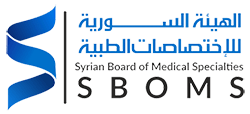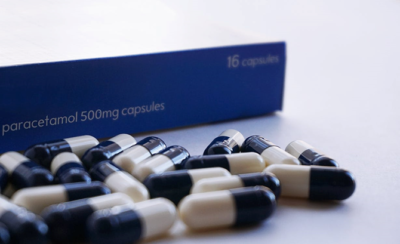Introduction
Paracetamol (acetaminophen) is extensively recognized for its analgesic and antipyretic properties, and it remains a widely utilized pharmaceutical agent due to its favorable safety profile when administered within the recommended therapeutic range. However, surpassing the established safety threshold can precipitate significant adverse effects, most notably hepatotoxicity mediated by the excessive accumulation of the reactive metabolite N-Acetyl-P-Benzoquinone Imine (NAPQI). In the absence of timely and appropriate medical intervention, these toxic effects can progress rapidly, culminating in acute hepatic failure and potentially resulting in mortality.
This case report describes a 17-year-old female patient who presented with manifestations of paracetamol toxicity following an overdose. Immediate therapeutic interventions, including the administration of activated charcoal to limit further absorption and N-acetylcysteine to replenish glutathione stores and neutralize NAPQI, were critical in preventing hepatic injury and ensuring patient survival. This case emphasizes the critical importance of early recognition, accurate risk stratification, and adherence to evidence-based treatment protocols in the context of acute drug toxicity. Furthermore, this case illustrates the efficacy of rapid medical intervention and the essential role of healthcare professionals in the precise and timely application of therapeutic guidelines. It also highlights the necessity of enhancing public awareness regarding the safe use of over-the-counter medications, particularly among adolescents who may be vulnerable to both unintentional and deliberate overdoses.
Case Presentation
Patient Information:
- Age/Gender: 17-year-old female
- Medical History:
- The patient has no known chronic illnesses, liver disorders, or other significant medical conditions.
- No history of prior surgical interventions or hospitalizations.
- There is no record of previous drug overdose attempts or psychiatric illness.
- Family medical history is non-contributory.
Presenting Complaint:
Brought to the emergency department due to abdominal pain following ingestion of 15 grams of paracetamol approximately 3.5 hours prior to arrival
Clinical History:
- Reason for Admission: Concerns regarding potential paracetamol overdose were raised by the parents, who accurately reported the timing and amount of ingestion.
- Context and Circumstances: Although medication overdoses can be associated with psychiatric disorders or suicidal intent, neither the patient nor her family reported any history of self-harm, psychological issues, or suicide attempt. The situation suggests that the overdose may have been accidental due to miscalculation or unintentional intake rather than deliberate self-harm.
Arrival Initial Symptoms:
- Mild epigastric pain without nausea or vomiting.
- No jaundice or other signs of liver damage at this stage.
- No complaints of dizziness, breathing difficulty, or general weakness, indicating stable vital status.
Clinical Examination:
Vital Signs:
- Heart Rate (HR): 90 bpm (normal)
- Blood Pressure (BP): 110/65 mmHg (normal)
- Temperature: 37.1°C (afebrile)
- Oxygen Saturation (SpO2): 98% (normal)
- Abdominal Examination: Epigastric tenderness upon palpation, without hepatosplenomegaly.
- No signs of severe poisoning or neuropathy, indicating early-stage stabilization.
Laboratory Investigations:
- Paracetamol Level: 130 μmol/L (measured 11 hours post-ingestion, toxic range)
- Hepatic Enzymes (ALT/AST): Within normal limits (< 46 U/L), indicating no liver injury at this early stage.
- Complete Blood Count (CBC):
- WBC: 13,100/μL (mild leukocytosis)
- Hemoglobin (Hb): 10.6 g/dL (mild anemia)
- INR: 1.1 (normal), indicating no immediate coagulation abnormalities.
Definitive diagnosis
Severe paracetamol poisoning.
Therapeutic intervention
- Activated Charcoal:
- 50 grams administered via nasogastric tube within 4 hours of ingestion to reduce residual paracetamol absorption
- N-acetylcysteine (NAC) Therapy:
- First hour: 7,500 mg administered intravenously
- Next 3 hours: 2,500 mg given over a 3-hour infusion
- Next 16 hours: 5,000 mg infused gradually over 16 hours
- Purpose: NAC restores glutathione levels, neutralizing NAPQI (a toxic metabolite of paracetamol) to protect the liver from damage
- Therapeutic Support:
- Saline (NS 0.9%): 1.5 liters to maintain fluid balance and stabilize blood pressure
- Ondansetron (8 mg): Administered three times daily to prevent nausea associated with treatment
- Proton Pump Inhibitors (PPI): 40 mg once daily to prevent gastric mucosal injury from medications or stress
Clinical follow-up
The patient was monitored closely over three days to assess her clinical status and response to treatment, focusing on liver function, coagulation, and biomarkers to prevent complications.
Day 1:
- INR: 1.7 (mild increase), suggesting the early effect of toxicity on the coagulation system but still within a controllable range.
- Blood Glucose: 60-62 mg/dL (mild hypoglycemia), requiring monitoring to avoid further decline.
- Liver Enzymes:
- ALT: 19 U/L (normal)
- AST: 22 U/L (normal)
- Interpretation: No evidence of liver injury at this stage.
- WBC: 10,200/μL (slightly elevated), likely reflecting an early inflammatory response.
Day 2:
- INR: 1.3 (improved), showing a positive response to treatment and stabilization of the coagulation mechanism.
- Paracetamol Level: 90 μmol/L (reduced), demonstrating the effectiveness of activated charcoal and NAC therapy.
- Liver Enzymes:
- AST: 28 U/L (normal)
- ALT: 25 U/L (normal)
- Interpretation: Liver function remains stable without signs of damage.
- WBC: 9,600/μL (mildly reduced), indicating stabilization of inflammation.
- Blood Glucose: 82 mg/dL (normal), suggesting improvement in glucose levels.
Day 3:
- INR: 1.1 (normal), indicating recovery of the coagulation system and absence of residual liver toxicity.
- Paracetamol Level: 52 μmol/L (safe range), confirming continued improvement and the effectiveness of treatment.
- Liver Enzymes and WBC: Remain within normal limits, reflecting no liver injury or significant inflammation.
- Glucose Levels: Stable within the normal range.

Assessment
The three-day follow-up shows a good clinical response to treatment with N-acetylcysteine (NAC) and activated charcoal, with normalization of coagulation, liver function, and glucose levels. There is no evidence of liver damage or persistent toxicity
Post-Discharge Procedures and Follow-Up Plan
- Follow-up of Liver Function:
- Liver enzymes (ALT/AST) were checked every two weeks for six weeks to monitor for any delayed liver damage.
- Results showed stable liver enzyme levels within the normal range, confirming full recovery
- Diet and Fluid Intake:
- The patient followed a healthy diet to support liver recovery.
- Increased fluid intake was recommended to help eliminate toxins naturally and promote healing
- Avoidance of Hepatotoxic Medications:
- The patient was instructed to avoid medications known to affect liver function, including paracetamol, during the follow-up period.
- This helped reduce the liver’s workload and ensured a complete recovery
- Health Education:
- The patient and her family were educated about medication safety and the risks of overdose.
- The importance of adhering to recommended doses and reading medication instructions carefully was emphasized to prevent future incidents
- Psychological Follow-up:
- Although the overdose was accidental, the patient received psychological support to address any potential underlying psychological factors.
- A referral to a psychologist was offered to rule out any suicidal intent or mental health concerns. This follow-up helped strengthen her emotional well-being and prevent recurrence
- Follow-up Appointment After Two Weeks:
- The patient attended her scheduled follow-up appointment for two weeks post-discharge.
- As no further issues were detected, her follow-up file was closed
Conclusion
The patient made a full recovery following prompt treatment and careful monitoring. The post-discharge plan, including regular liver function assessments, medication education, and psychological support, ensured that no complications developed. This case highlights the importance of early intervention and comprehensive follow-up in cases of paracetamol overdose.
Clarification:
Case Management and Team
This case was treated at Al-Quds Hospital, supported by Hand in Hand. The management team included:
- Dr. Mahmoud Ramadan – Dr. Hikmat Al-Sultan – Internal medicine residents, Syrian Board of Medical Specialties (SBOMS)
- Supervised by Dr. Aqel Al-Yahya – Specialist in internal medicine and gastroenterology
To view the discussion of cases of Acetaminophen poisoning click on the link

